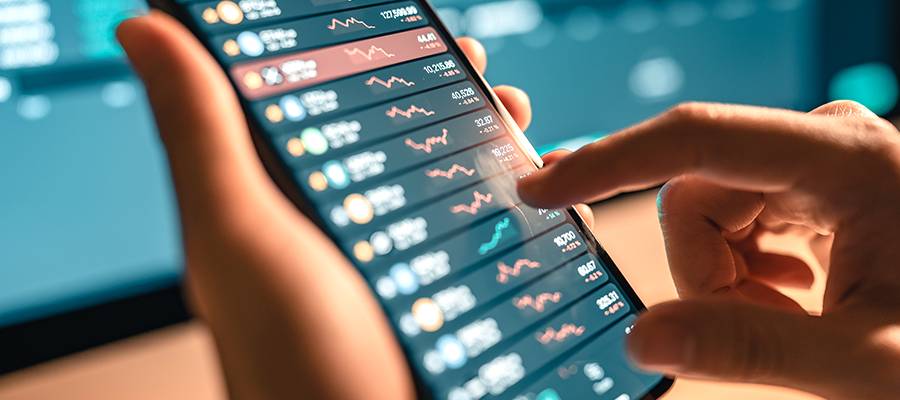The suffix DAO has been appended to various nouns, with some newsworthy examples being ConstitutionDAO, which had a goal of buying a copy of the U.S. Constituting by crowdfunding at Sotheby’s; bitDAO; that acts as a decentralized venture capital (VC) fund for up and coming decentralized finance (DeFi) protocols and ecosystems; and MakerDAO (CRYPTO: MKR), a decentralized lending facility backed by the USD-pegged stablecoin Dai (CRYPTO: DAI).

What Are DAOs?
DAO stands for decentralized autonomous organization. Decentralized means there is no central authority that can fully control the actions of a DAO; autonomous means decision-making processes wait for no one member of a DAO to weigh in; and organization means a DAO has a declared goal or mission statement. As such, decision making within a DAO is usually handled by on-chain governance methods, with the intent of establishing a transparent governing body that consistently makes decisions according to the will of the people.
Blockchains facilitate the decentralized and transparent aspect of DAOs by protecting anonymity and removing most differentiators from individual members of a DAO, with the notable exception of wealth, in the sense that a wealthy member of a certain DAO could theoretically purchase more voting tokens to turn a DAO’s democracy into a plutocracy. This can be avoided by restricting the distribution of tokens to some extent or by creating unified delegations.
Top Investment DAOs
Investment DAOs as a category of DAOs can be further separated into relatively broad subcategories, specifically according to what they invest in and how they go about doing so.
Utility DAOs use their funds to provide utility (usually collateralization) to a single project, which most often involves a pegged asset of some kind.
Utility DAOs like MakerDAO establish stablecoin values by providing a decentralized credit platform where Ether (CRYPTO: ETH) and other tokens serve as collateral. MakerDAO establishes the value of the stablecoin DAI, with the MKR token acting as the ecosystem’s governance token. MKR fluctuates in value to maintain DAI’s $1 peg.
The MakerDAO has over $8 billion in assets under management (AUM) with various VC funds like Paradigm and Dragonfly Capital participating in the ecosystem by purchasing vast amounts of MKR.
The utility DAO OlympusDAO builds a collateral treasury that establishes a free-floating reserve currency based around a basket of tokens, much the way the consumer price index measures buying power in the U.S. economy. OlympusDAO offers an exponential return on staking with a game theory-backed incentive scheme for bonding and staking.
Venture DAOs are another interesting category of investment DAOs. Their purpose is to somewhat decentralize the digital assets venture capital space while simultaneously allowing VC firms to engage with the DeFi community more directly.
A notable example of a venture DAO is the bitDAO, which boasts $2.3 billion assets under management collected through the BIT token, and uses on-chain governance to vote on which DeFi protocols and projects should receive investments from the DAO.
This model is largely mirrored by the other venture DAOs in the space, including the Lao and MetaCartel venture DAOs. Legal compliance mandates that venture DAOs need to consist of a centralized legal LLC, which in some sense fails the promise of DAOs being decentralized entities.
Collector DAOs, another subcategory of investment DAOs, purchase various non-fungible assets as a part of a illiquid investment portfolio. With the massive rise of digital art, crypto twitter and non-fungible tokens (NFTs), the collector DAO space for digital art has exploded. DAOs like Flamingo DAO and PleasrDAO as well as acquisitions like an unreleased Wu Tang Clan album and the original Doge meme are drawing massive amounts of attention to the space.
These DAOs also boast membership from various internet influencers, adding value to their acquisitions. The concept of collector DAOs has gotten more attention lately, with the notion of DAO ownership over physical items such as The One DAO’s aim to buy the largest house in the world and the ConstitutionDAO’s unsuccessful attempt to buy a copy of the U.S. Constitution.
Finally, a category of investment DAO expanding at an insane rate is the cookie-cutter investment DAO, as exemplified by Syndicate and the DAOs that have been created using it.
Syndicate allows any group to establish a legally compliant DAO within minutes, which it achieves by automating much of the process. Over the past three weeks, over 450 “investment club” DAOs have been created using Syndicate, comprising around 10% of all DAOs. This level of expansion over such a short period gets at Syndicate’s aim of democratizing the DAO as an investment structure.
How to Join a DAO
Joining a DAO is akin to joining the DAO’s community, which is often hosted on Discord or Telegram. To properly become a member of an existing DAO, you must make a membership proposal offering digital tokens in exchange for DAO membership tokens at a loosely predefined exchange rate. A clear example of this is Andrew Yang’s recently launched DAO Lobby3, which has three membership tiers ranging in entry costs from 0.07 ETH to 40 ETH. But even if you had 40 ETH to spare, you’d need to be specifically invited to join the top tier of the DAO, which demonstrates the desired exclusivity of many DAOs.

